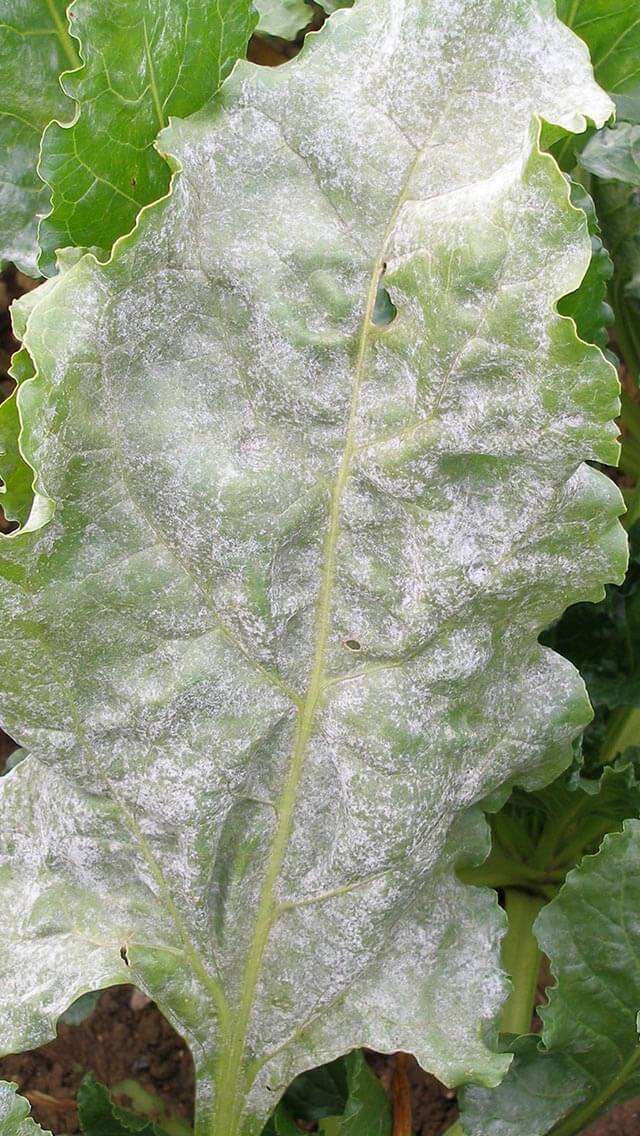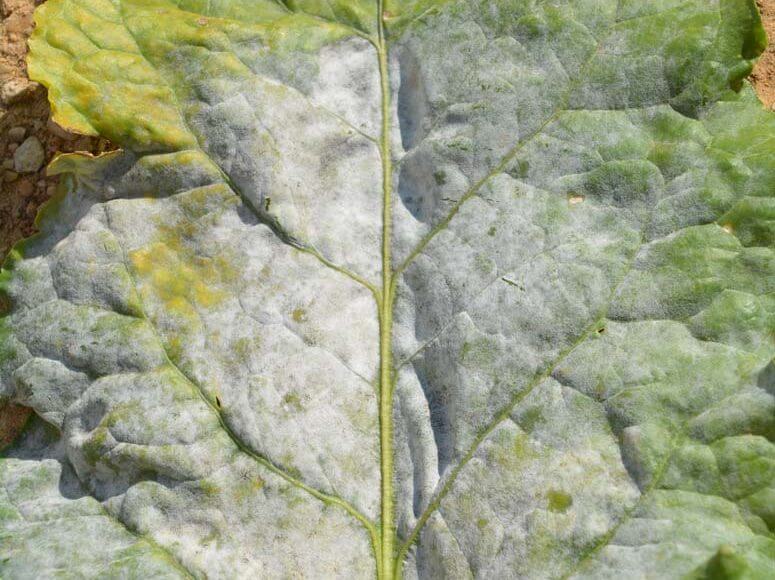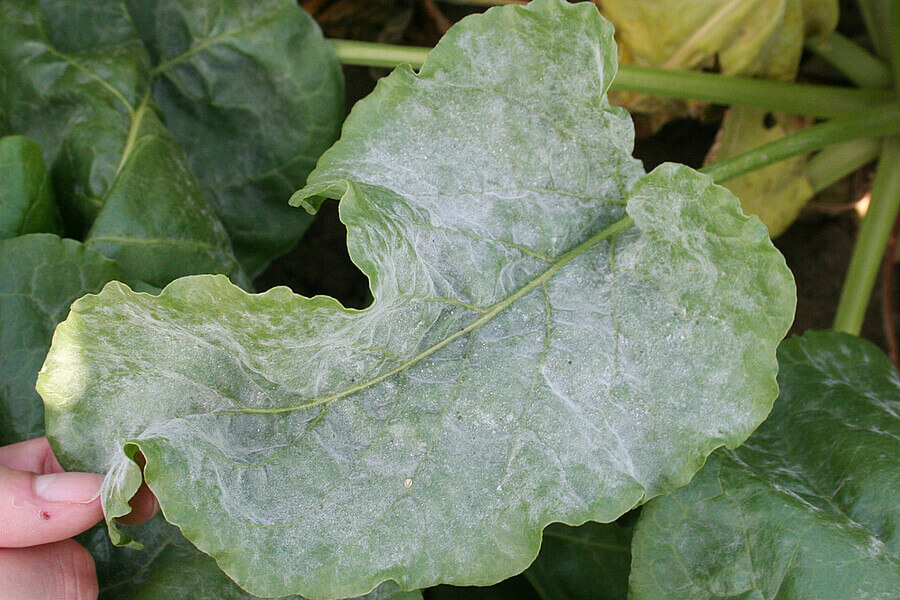
Remolacha de mesa
How to recognize and combat powdery mildew on table beets
Powdery Mildew
Fungus
Type:
Risk to the plant:
INTERMEDIATE
Erysiphe Betae
Pathogen:

Oídio
WHO CAUSES IT?
Erysiphe betae is an ascomycete fungus that causes powdery mildew in various plants, especially beets. Its structure is a network of white mycelium that grows on the surface of the leaves, stems and other parts of the plant. This pathogen reproduces through asexual spores called conidia, which are dispersed by the wind. Conidia germinate under favorable conditions of humidity and temperature, forming germ tubes that penetrate plant tissues. Additionally, Erysiphe betae forms resistance structures called cleistothecia, which contain sexual ascospores. These cleistothecia allow the fungus to survive in plant remains and in the soil during adverse periods. When conditions are favorable again, the ascospores are released and can initiate new infections.
SYMPTOMS
Powdery mildew in table beets is a disease that mainly affects the leaves, reducing photosynthesis and weakening the plant. Symptoms include white powdery Taches covering the surface of leaves and other aerial organs. Infected leaves may turn yellow and drop prematurely, which decreases the plant's ability to produce and store sugars, affecting crop yield and quality.
- White powdery Taches on leaves and stems.
- Yellowing and premature leaf fall.
- Reduction of photosynthesis.
- General weakening of the plant.
- Decrease in crop yield and quality.



DEVELOPMENT CONDITIONS
Temperature:
15°C - 25°C
Humidity:
60% - 80%
HOW IS IT SPREAD?
Spores carried by the wind, remains of infected crops, direct contact between plants
HOW TO ELIMINATE IT?
Home treatments
There are no home treatments
Natural allies
Chemical treatments
There are no treatments for this disease. Treatments are directed at the insect vectors that transmit it. See insect treatments.
RECOMMENDED PRODUCTS TO ELIMINATE THE PEST
Sponsored link
Sponsored link
Sponsored link
Sponsored link
Sponsored link
Sponsored link
Sponsored link
Sponsored link
Sponsored link
Effective against all types of fungi
Sponsored link
Sponsored link
Sponsored link
Sponsored link
Sponsored link
Sponsored link
Sponsored link
REPELLENT PLANTS
RECOMMENDATIONS
















































